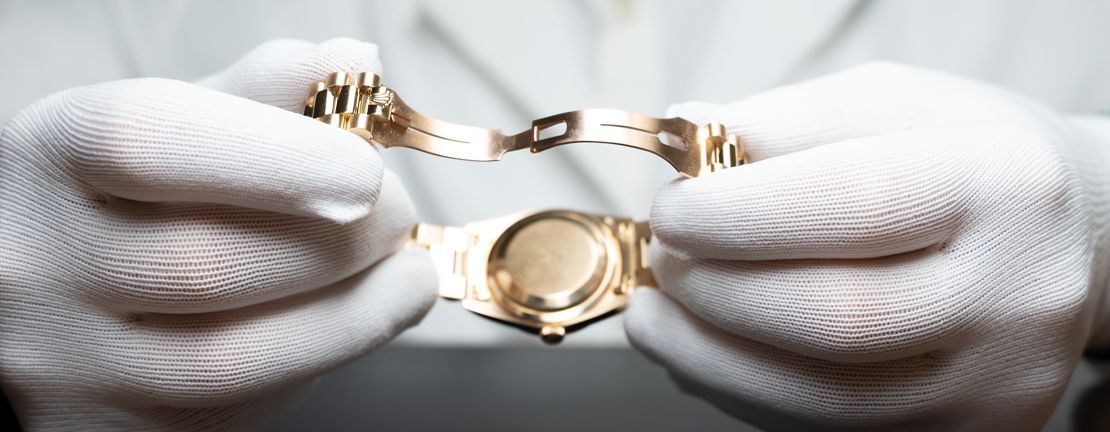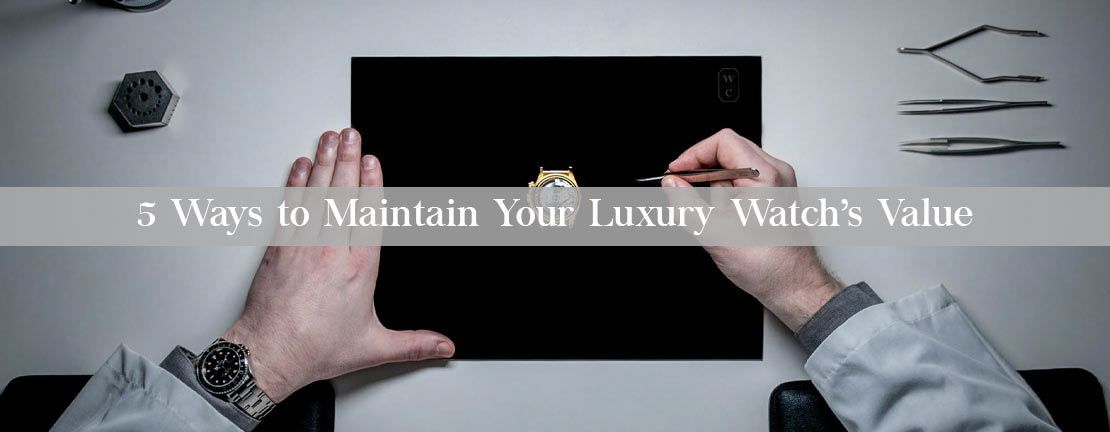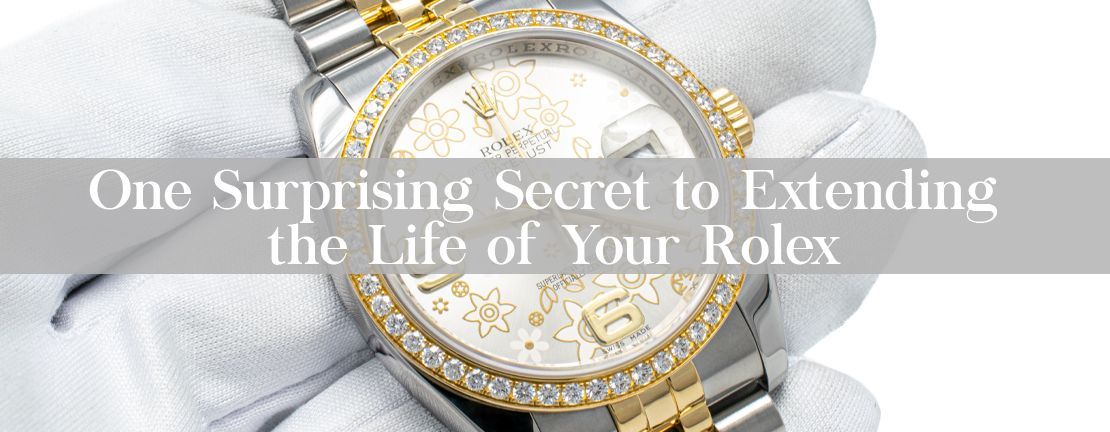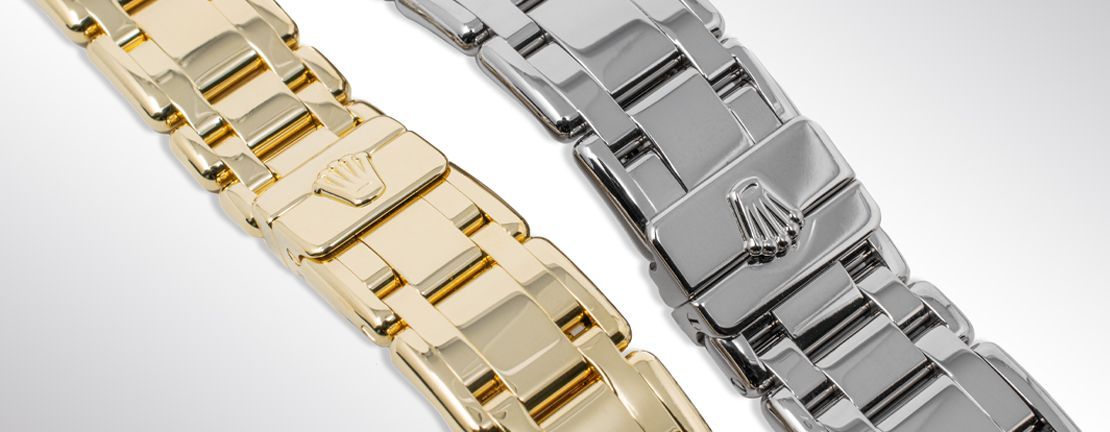In the first of many in a series of addressing the most frequently asked questions heard while I worked at Watch Chest, I thought I would a write about the one heard most often: “What year is this watch?”
As a potential customer who is about to spend thousands of dollars with a company, you have every right to ask any question you want. Even after being around this industry for many years, I would still ask that question if I were buying a pre-owned Rolex or other luxury timepiece from someone. However, there is a skewed amount of emphasis that is placed upon the age of a Rolex, when an entirely different aspect should have precedence when you make your selection.
Condition is King
I have seen “new” watches come into the Watch Chest office that looked as if they had been beaten with a sledgehammer after being run over by a train. I have also seen Rolex Presidents and Datejusts from the 1980s that arrived to us from a time capsule; appearing untouched and in no way mishandled. While these are two opposite ends of the spectrum, watches arrive everyday in the middle of the scale and the lines between age and condition become a little blurred.
Even more important than the age of a luxury mechanical watch is condition. Condition will almost always trump age in a purchase between independent dealers or collectors and it directly affects price in the wholesale and retail markets.
Age is superior only in the context of when it comes to the era of a Rolex you are looking for, which I simply see as a way to filter through and narrow down your selection. The eras of a Rolex are categorized by mechanical or aesthetic updates on the models and in the pre-owned market they will usually have a significant price gap between them.
To keep your Rolex looking and running like new, be sure to contact us about our services!
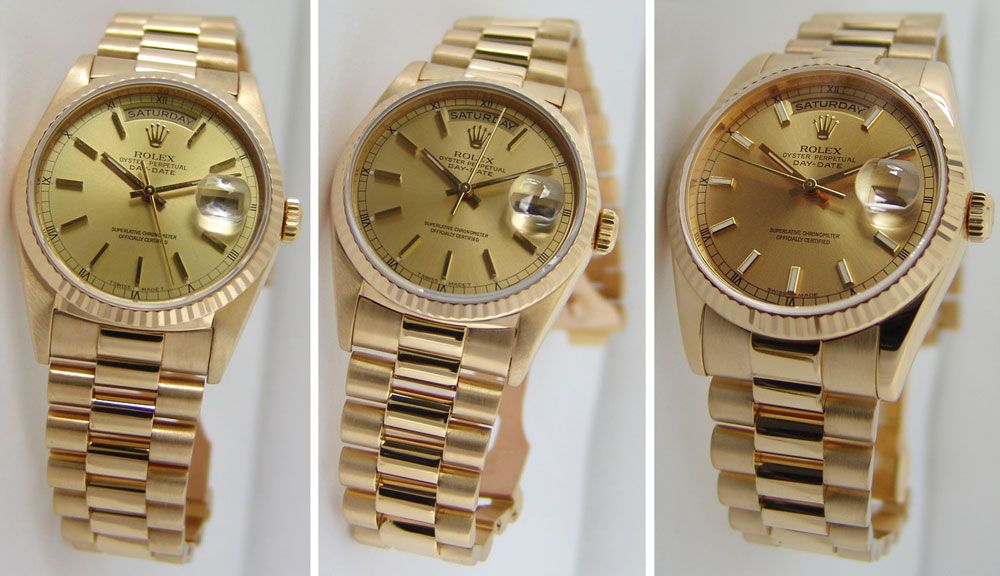

Left: Model 18038 – Late 1980s Middle: Model 18238 – 1990s Right: Model 118238 – Mid 2000s
Defining Condition
At Watch Chest, I learned how to look for the visible signs of wear as a Rolex would come into the office. We’d first go over a watch with this basic list in mind:
- Visible heavy scratches or gashes in the metal bracelet, case, winding crown, or bezel
- Bracelet wear and give (determined by holding the watch on its side by the case)
- Signs of over-polishing
- Chips and scratches on the crystal
- Signs of a less-than-perfect dial (or face)
The Inside Matters Just As Much As The Outside
Once I would go over the outside, I would then pull out the winding crown to give the watch a wind and listen to the movement. Equally important to the aesthetic condition is the status of the internal guts that make Rolex a Rolex.
Movements within a Rolex that go unattended for years at a time will become dry, causing the parts to grind and inflict premature wear and damage. Much like a classic car that features simple mechanics of the engine and its surrounding parts allow it to run decades upon decades when upkeep is maintained, the extremely durable mechanical movement within a Rolex can last for generations if cared for properly.
When the service department would open up a Rolex to inspect the movement, you are always hoping to see signs of lubrication. A lack of lubrication is an immediate red flag that warns you the movement probably hasn’t been serviced in awhile, if ever. The watch is also placed upon the Time Machine in its initial inspection to monitor how well the movement is keeping time. Both of these tasks give insight to the watch’s internal health, which directly affect its value.
This Info Put Into Context
Say you are looking to buy a car. You don’t want to buy new and you’ve found two that you are now deciding between, Cars A and B.
Car A is nearly identical to B: each are the same color, the same trim package, and the same features. Car A is 5 years old and has 16,000 miles but Car B is 2 years old and has 28,000 miles with a few scratches that got buffed out. Car B also has had only 2 oil changes and needs new tires, while Car A’s original owner has kept up with its maintenance and new tires were put on 6 months ago.
Between these two cars, the price will not be too far off but Car B is more expensive because technically it is newer. However, I’m sure most would agree that miles driven on the engine is what ages a car and decreases its value. In this case, condition should override age and you would choose Car A.
All That To Say
The real value in a Rolex is its ability to last for generations, which is where “miles” and care come into play. Age transcends time as collectors search for particular pieces and base their success upon the condition of what they find. Or perhaps you don’t intend to keep it that long: keep in mind that as you try to resell it in the future, the worth of your Rolex and the return on investment will always be determined by its condition, not age.
When searching for your next pre-owned Rolex, age should definitely be taken into account. But what I’m sharing with you may help you in the long run: don’t be distracted by the age of a Rolex when you ask its serial letter or what year it sold new. While you may still want to know this information before you buy, your first concern should be how well it was treated, inside and out!
Check out our wide collection of Rolex watches on our website!
What are some of the first things you look for in search of your next Rolex or other luxury watch?

